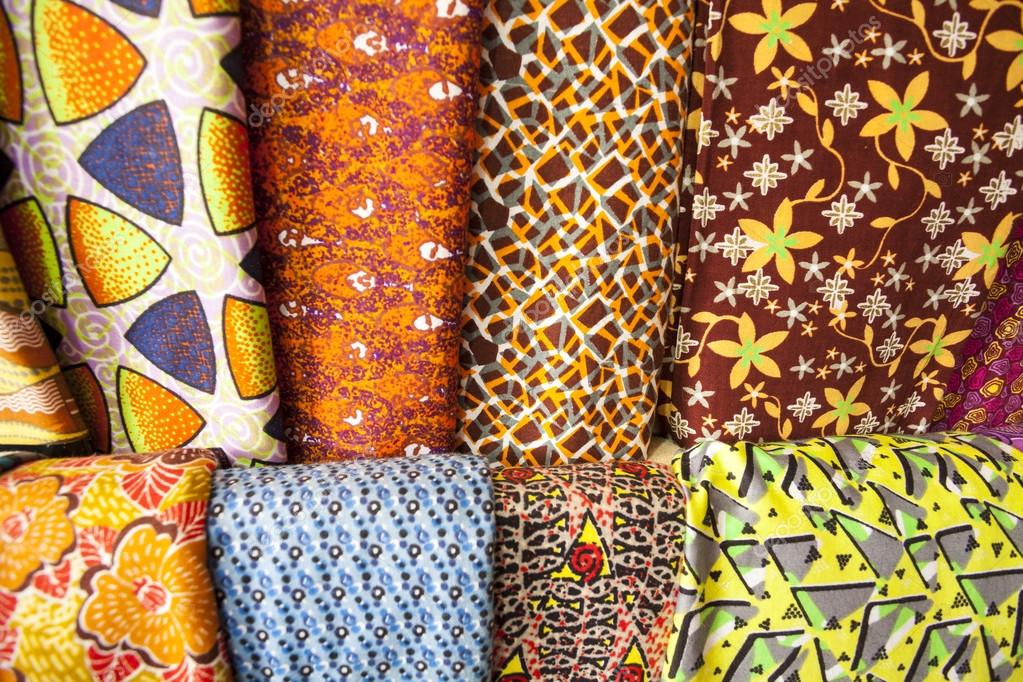Do you love the lure of ephemeral fashion trends? Do you engage in the continuum, which perpetuates the sense of change?
Flaring tops, skin-tight bottoms, skin-tight tops, flaring bottoms, bright colors, toned-down colors – fashion trends change. Either due to practical need (to accentuate different body types) or just as a change for change’s sake.
“Variety is the spice of life,” so they say.
But should platitudes, like that one, govern our environment? Or should we pay more attention to the underlying factors that our fixation with variety has created?
If there are still people who are unaware of the consequences of fast fashion, now might be the time to take stock of it.
What is Fast Fashion?
Fundamentally, it is nothing more than the need to wear affordable clothes that mimic contemporary trends in high-end fashion… at an unsustainably fast rate.
Since trends are ephemeral, we tend to dispose of clothes within a short time period, a period during which the trends are active.
To maximize that decadent image of variety, consumers do not wear the same clothes in quick succession and dispose of them quickly for other clothes of still-newer trends.
Clothing producers have tapped into this “fast need,” creating a whole industry around it.
Throughout the fashion supply chain and during a clothing product’s lifetime, they have adjusted factors to accommodate the need for fast fashion.
We have sped up the production processes with unrealistic ambition. And all this speeding up does not help the environment.
For one, it has created excess wastage. Secondly, it encourages the use of cheaper synthetic fibers which have far higher CO2 emissions than natural fibers and let out chemically toxic waste materials.
Thus, scientists and experts, the world over, criticize the impact of fast fashion.
What is Synthetic Fibre?
Synthetic fiber is fiber extracted and manufactured from non-renewable sources like crude oil. Through petrochemical processes, producers create nylon (polyamides) and polyester for their many industrial uses, one of which is fashion.
Through the last two decades, synthetic fibers have outdone natural fibers, such as cotton and wool, in production. Polyester is now the dominant fiber sold, with more than double the volume of cotton.
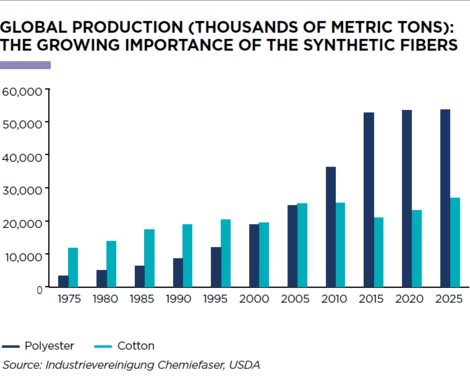
Why Are Synthetic Fibers So Overused, if They Are So Harmful?
Synthetic fibers are cheaper to produce and quite common. Since they are common and demand for them is high, prices are lower compared to natural fibers, as you can see in this graphic.
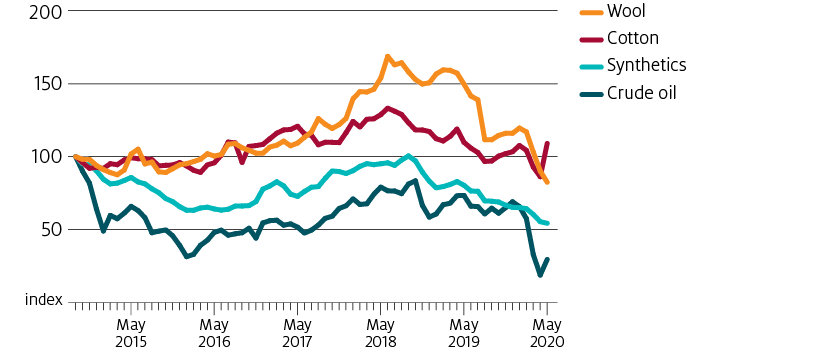
Wool and cotton also require larger quantities of water to produce, water which not all nations have easy access to. Nations that have great quantities of crude oil, the source for synthetic fiber, would also prefer to produce synthetic fibers on a large scale. When the price of crude oil falls, so does that of synthetic fiber.
Besides that, synthetic fibers used in fashion have real advantages. They are color fast, abrasion-resistant, tear-proof, stretchy, and moisture-retentive. These attributes are meaningful.
Sportswear and athleisure categories need these attributes—since excessive stretching is an unavoidable aspect of sports, gym, and athletics.
But the Disadvantages Are Now Outweighing the Advantages
There are a host of problems associated with the products, by-products, and waste of synthetic fibers.
Polyester has been related to breast cancer. Scientific investigators have found microplastics of these synthetic fibers in polar bears in the Arctic region, as well as in penguins in the Antarctic region! The problem circumvents the whole globe and pervades all its aspects: air, landfill, groundwater, and oceans.
There are two categories of the toxic effects of synthetic fibers, based on their life cycle:
1. Production & Manufacturing
The excessive amount of energy consumption needed to produce the polyester is alarming.
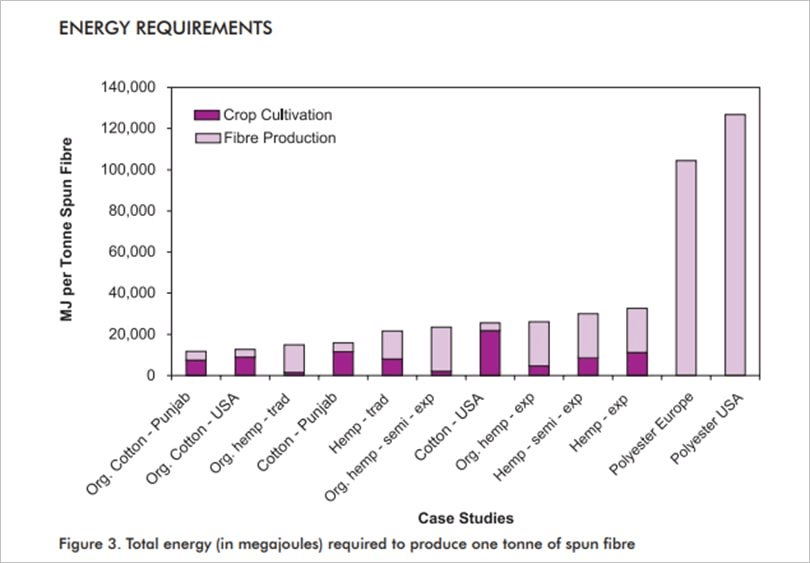
China, India, and many Asian nations use coal as an energy source for their textile manufacturing process. Coal increases carbon footprint to exponential levels.
Why is this not regulated?
China is the leading producer of synthetic fiber in the world. But environmental laws are laxer there. Therefore, Chinese textile manufacture has more (destructive) freedom. This freedom would not be possible in more environmentally conscious western nations.
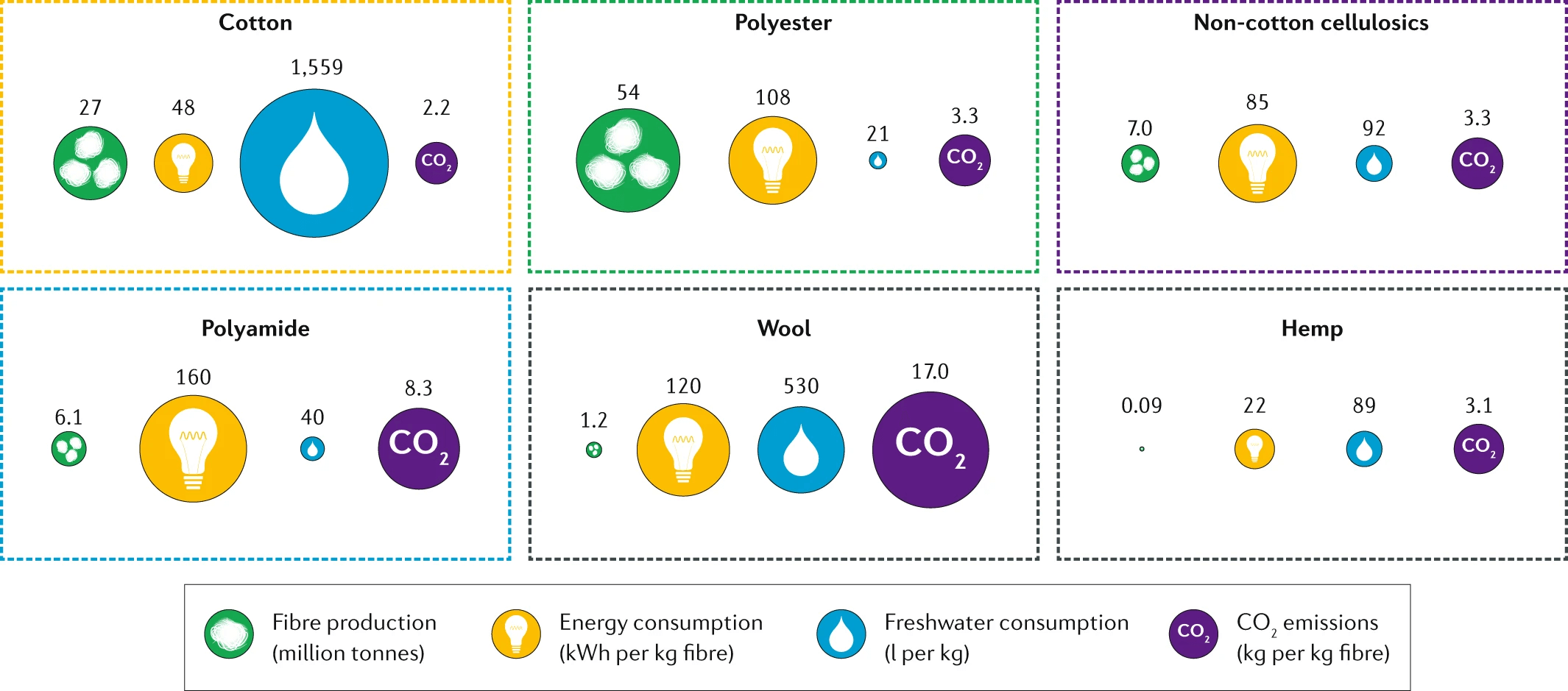
Among non-animal fibers, CO2 emission is highest for nylons (polyamides).
What about the actual process of manufacturing?
- Weaving and yarn-spinning factories use accelerators, lubricants, and solvents. These contain harmful chemicals.
- Wet processing plants use surfactants, bleaches, dyestuffs, softeners, antifoaming agents, and water repellents. These are harmful chemicals.
- Some textile-finishing plants are known to use half a kg of chemicals for every kg of textiles produced!
- Disperse dyes, fluoridated water, phthalates, stain repellents, and other colorants used in the manufacturing process have also been found to be highly toxic to human and animal life.
Manufacture affects workers and surrounding animal life through bioaccumulation. This information about the content of pre-production textiles should be made transparent so that cleaner manufacturing methods are devised.
Then there also is wastage due to assembly line errors. There are machine-cutting errors. Due to administerial lacunae between design offices and producers, designs fail.
Communication is key if they are to mitigate wastage. That is why design offices should preferably be near the area of production.
But since the area of production is usually in developing nations like China and India, and design offices are in North American and European nations, this becomes a lasting problem too.
Software, robotic, and technological innovation can reduce it to an extent, but there will always be a small percentage of fabric wastage.
2. Post-Production & Post-Consumer
These are the effects that happen after production. Calculations do not always go to plan. Producers often incinerate surplus and returned clothing products, called “deadstock.” Emissions within the atmosphere increase here, but not as much as in production processes.
Landfill is a common method to lose waste. But this affects the groundwater and the surrounding population. We must not take bioaccumulation lightly.
The concomitant by-products and waste of synthetic fibers pervade the biosphere in ways we cannot see.
Second-hand clothing stores can mitigate the wasteful philosophy of fast fashion. But this is not possible on a large scale if the influx of synthetic clothes production is so high. There is so much fresh, “firsthand” material due to fashion, it saturates markets!
There is little space for secondhand fashion to grow. Besides, fashion brands always try to suppress secondhand initiatives, as it competes with them.
We Need To Slow Down Production!
The responsible answer lies in conscious consumerism.
We, as consumers, need to perpetuate the system that is more conscious of the environmental effects of destructive fast fashion trends.
Rather than advocate for ever-changing, ephemeral fashion culture, we could advocate for:
1. Better source material
Natural fibers like hemp, which do not use as much water as cotton. Cotton, while needing more water, also emits less CO2.
2. Extended usage of clothes
The longer we use clothes, the less we produce waste. Producers are also discouraged from overproducing.
3. Second-hand industry
While not possible on a large scale, this can serve the poorer sections of society.
When there is a conservative approach to buyers, producers and retailers will reflect their conservative approach too. Peer-to-peer sharing systems. Repair services. Collaborative business models. Recycling. We need to explore these processes.
Recycling is a multifarious process that can either create new non-fashion products or mix with virgin cotton for fresh fashion. Governments have implemented recycling to a higher degree in European Union nations (especially Germany and U.K.). But it is still lagging in Asian and American ones.
In other words, the solutions are there.
But the desire to implement them is on us.
Let’s create a sustainability-conscious culture!

